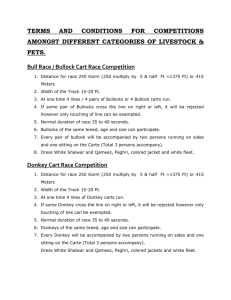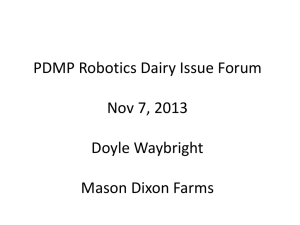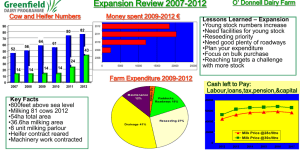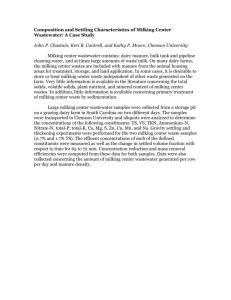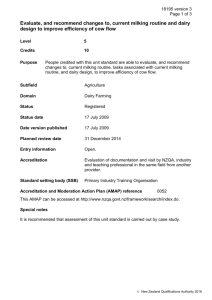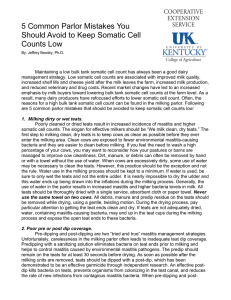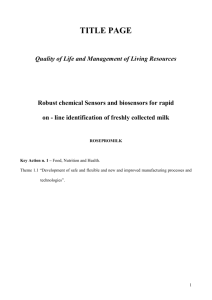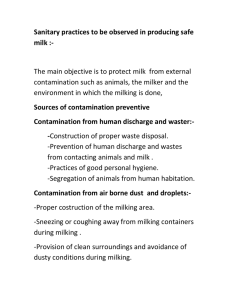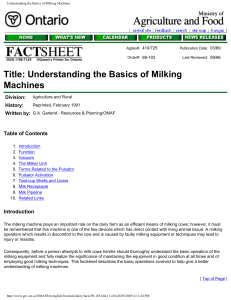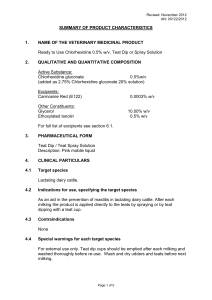Cluster during and after milking - IMQCS
advertisement
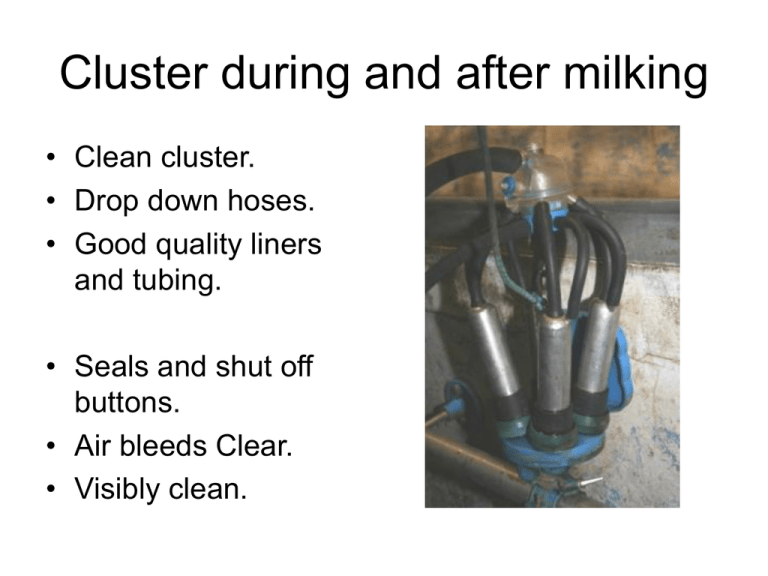
Cluster during and after milking • Clean cluster. • Drop down hoses. • Good quality liners and tubing. • Seals and shut off buttons. • Air bleeds Clear. • Visibly clean. Main Milking machine faults • Incorrect milk line fall Milking Machine faults • Milk Entries Milking Machine faults • Restrictions of long milk tube. Milking Machine faults • Length of Long milk tubes Milking Machine Faults • • • • • • • • Faulty pulsation Vacuum (Farm vacuum gauges incorrect) Inadequate vacuum reserve Blocked Claw piece air bleeds Worn or twisted liners Inability of milk pump to clear jars Wrong fall in milk line Milk enteries not in top third. Milking Practice Issues • Minimise teat end damage. • Taking clusters off under vacuum. 1 in 3 herds it is a problem.(blocked air bleeds, faulty buttons, hard water areas). • Over milking. • Excessive air loss at cluster change • Parlour not set up for milking through recorder jars. Infection Control • • • • • • Fore milking with no gloves. Spread of infection from cow to cow Poor hygiene. ( cubicles and parlour) No proper teat dipping. Poor quality Teat condition. No records cannot ID problem cows Preventing Mastitis • Clean and dry cubicles and calving boxes • Fully serviced milking parlour. ( Teat Sprayer) • All milkers wear gloves. Pre spray and dry wipe dirty cows. • All fresh calvers fore milked for first 10 days. • Avoid over milking and cross infection. • Post spray all cows after milking i.e 750mls/50 cows/milking. • • • • • • Mastitis/SCC outbreak ’09; (>250,000 or 2 to 3 cases /week) Wear Gloves Pre spray and dry wipe with paper towel. Cluster dip after problem cows. Post spray all cows. 15 mls/cow/milking Milk Record. Cull chronic cows with 3 tests over 1 million or Dry problem quarter. • The damage these cows do to a herd cannot be overestimated.

